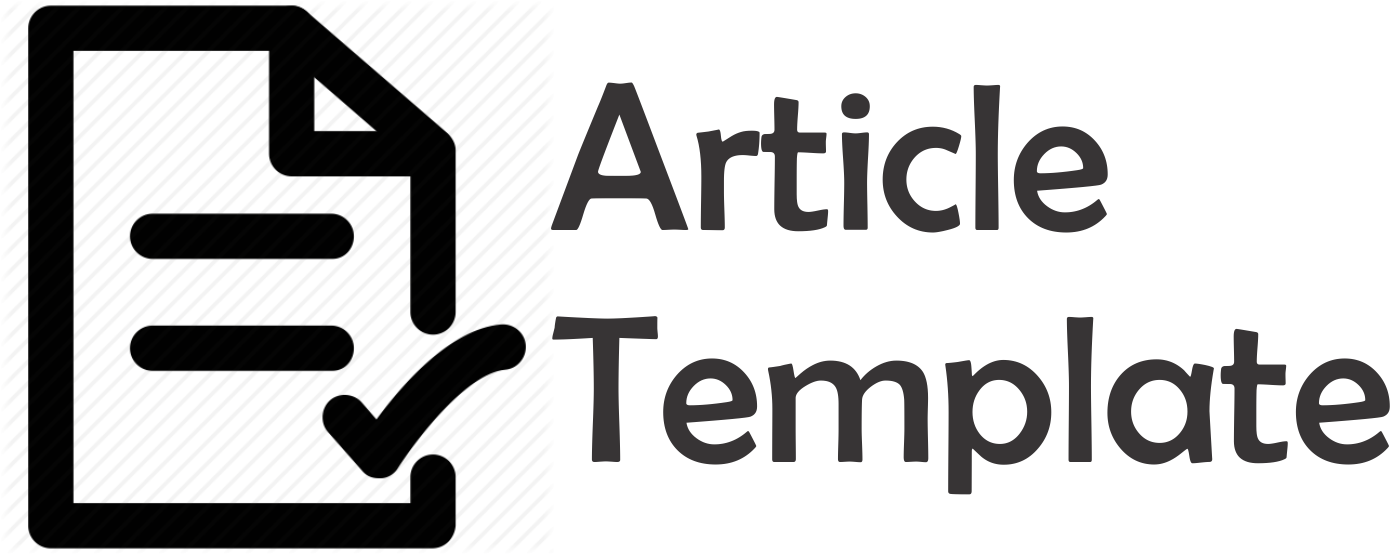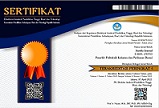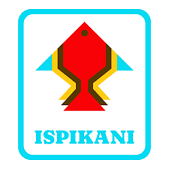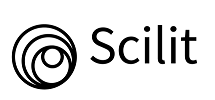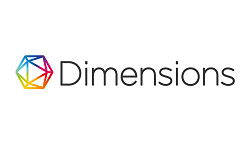Author Guidelines
WRITING GUIDELINES
AURELIA JOURNAL
Acceptable articles are research results or research techniques related to technology, coastal communities, fisheries and marine. Articles must be original writings of the last 10 years, in Indonesian or English, which have never been or are being published in national or international scientific journals. The article is written in good and correct Indonesian. Writing must be done using Microsoft Word. Manuscripts outside of these conditions will not be accepted. The writer must include the correspondent's author's name, full address, and email address. The correspondent author manages the authenticity of the research and the content of the manuscript. Other authors (if any) must have approved the sent manuscript.
Writing Title, Author's Name and Address
The title of the article, the author's name (without an academic degree), and the author's affiliation address are written evenly on the first page below the article title. The spacing between the lines between the title and the author's name is 2 spaces, while the spacing between the author's affiliate address and the abstract title is 1 space. Keywords should be written under the abstract text for each language, arranged in alphabetical order and separated by semicolons with a word count of 3-6 words. For articles written in Indonesian, write a translation of the title in English at the beginning of the English abstract text (see example above).
The Responsible Author or Correspondence Writer or Corresponding Author must be marked with an asterisk followed by an asterisk followed by an asterisk (*) as in the example above. At the bottom of the last affiliation before the first abstract, the Corresponding Author (with an abbreviation, only the last name is not abbreviated) and the email address (see example). Communication about article revisions and final decisions will only be communicated via the email of the Correspondence Author.
If there is more than one author, write the author's names separated by a comma (,). If the author's name consists of two words, the first name should not be abbreviated. If the author's name consists of only one word, print the actual name in one word, but nevertheless in the online version (HTML) it will be written in two words having the same name (repeatedly) for metadata indexing purposes (Camdali & Tunc, 2006; Fridman, 2008).
General Guidelines for Writing Manuscripts
Manuscripts that have met the Aurelia Journal writing instructions (in MS Word format, use this article template) are sent in two events, namely through online submission on the http://ejournal-balitbang.kkp.go.id/index.php/aureliajournal page and can also be through journal email (aureliajournal.pkpd@gmail.com). The manuscript must contain the following components of the scientific article (subheadings in order), namely: (a) Title of the Article, (b) Author's Name (without title), (c) Author's Affiliation Address, (d) Abstract and Keywords, (e) Introduction, (f) Materials and Methods, (g) Results and Discussion, (h) Conclusion, and (j) Bibliography.
Writing subheadings in the body of the article (Introduction, Materials and Methods, Results and Discussion, Conclusion). The subtitle is written in bold letters with Arial Narrow font 12 format and is arranged evenly in the middle without an underline (heading 2). The sub-subtitle is written in italics (not bold) with Arial Narrow font 12 format and arranged in a left-aligned manner (heading 3).
The manuscript can be written in Indonesian with a maximum number of pages of 15 pages including pictures and tables. The manuscript must be written according to the template of this article in a print-ready form (Camera ready). Articles must be written with an A4 writing field size (210 x 297 mm) and with a format of 2.5 cm left margin, 2.5 cm right margin, 2.5 cm bottom margin, and 2.5 cm top margin. The manuscript must be written in Arial Narrow font with a font size of 12 pt (except for the article title, author's name and abstract title), spaced one space, and with a layout of 1 (one) column. Foreign words or terms are used in italics (Italic). It is best to avoid using foreign terms for Indonesian articles. The beginning of the paragraph does not protrude to the right, for the second paragraph it is made indented by 1 cm. All numbers are written in Arabic numerals, except at the beginning of the sentence. Writing units uses the International System of Units (SI). Examples of abbreviations for unit symbols: gram (g), Liter (L), cubic meter (m3), per cubic meter (m-3).
Tables, drawings and diagrams/schematics should be placed in columns between groups of text or if they are too large in the middle of the page. Tables should not have vertical lines, while horizontal lines are allowed but only the essentials. The tables are made concise and briefly but clearly titled only presenting essential and easy-to-understand data. The table is given sufficient records, if the table is the result of primary data processing, it does not need to be given the source information, but if the table is secondary data, the source information must be included. So that the table can explain the information presented independently. Each table is numbered sequentially and reviewed within the manuscript. The title of the table is typed with Arial Narrow 12 pt, 10 pt in the source and in the inscription "Table 1." "Table 2." and so on are typed in bold. The table uses 1 (one) mandatory language, namely Indonesian. Tables must not be in the form of images in the form of jpg, png, image files and must be in the form of tables created in Microsoft word and use 1 space in the table text. The table title is written at the top of the table, left-aligned and marked with a period (.) at the end of the table title.
Images, Graphics and Photos must be sharp and clear so that the prints are of excellent quality and have the source from which the file was taken or the process of obtaining the data. All the symbols in it must be explained. As with tables, captions on images, graphs and photos must be sufficient to be presented independently. Images, graphics and photos should be reviewed in the manuscript. All information contained in Images, Graphics, and Photos must be in two languages as in the table, namely Indonesian and English. Images, graphs and photos have a depth of at least 300 dpi.
Special Instructions for Writing Manuscript Content
a. Article Title
The title of the article must be written briefly and clearly, and must show exactly the problem to be raised, not provide opportunities for diverse interpretation, written entirely in symmetrical capital letters. Article titles must not have abbreviations of words that are not commonly used. First present the main idea of the new article followed by other explanations.
b. Introduction
The introduction should have (in order) the general background, the review of the earlier literature (state of the art) as the basis for the scientific novelty statement of the article, the scientific novelty statement, and the research problem or hypothesis. At the end of the introduction, the purpose of the study of the article must be written. In the format of scientific articles, there is no literature review as in the research report, but it is manifested in the form of a review of earlier literature (state of the art) to show the scientific novelty of the article.
c. Materials and Methods
Materials and methods have the main materials used in research and methods used in problem solving, including analysis methods. The ingredients listed here are only the main ingredients and must be equipped with their brand and purity (e.g.: H2SO4 (Merck, 99%)). The equipment described in this section has only the main equipment equipped with a brand (e.g., electric furnace (Carbolite)). The components of the supporting equipment do not need to be written. The main set of tools should be presented in this section with image captions. The image caption is placed as part of the image title (figure caption) instead of being part of the image. The methods used in completing the research are described in this section.
d. Results and Discussion
The results and discussions have the results of research findings and scientific discussions. Write down scientific findings obtained from the results of research that have been conducted but must be supported by adequate data. The scientific findings referred to here are not the data obtained from the research results. These scientific findings must be explained scientifically including: What are the scientific findings obtained? Why does that happen? Why is the trend variable like that? All these questions must be explained scientifically, not only descriptively, if necessary, supported by adequate scientific basic phenomena. In addition, it must also be explained how it compares with the results of other researchers who are almost on the same topic. The results of the research and findings must be able to answer the research hypothesis in the introduction.
e. Conclusion
The conclusion describes the answer to the hypothesis and/or the purpose of the research or scientific findings obtained. The conclusion does not have a repetition of the results and discussion, but rather a summary of the findings as expected in the aim or hypothesis. If necessary, at the end of the conclusion can also be written the things that will be done related to the next idea of the research.
f. Bibliography
All references referred to in the text of the article must be listed in the Bibliography section. The library that comes from your own writing is a maximum of 5 writings. The bibliography must have reference libraries derived from primary sources (scientific journals and accounting for at least 80% of the total bibliography) published in the last 10 (ten) years. Writing a reference system in article text and writing a bibliography using a reference management application program such as: Mendeley, EndNote, or Zotero, or others with APA 6th edition style.
Guidelines for Writing Citations/References in Article Text
Every time you take data or quote statements from other libraries, the author is obliged to write down the source of reference. References or citations are written in the description/text by the author's name and year (Irwan & Salim, 1998). If there are more than two authors, then only the name of the first author is written followed by "et al. (Bezuidenhout et al., 2009; Roeva, 2012). Everything referred to in the text must be listed in the Bibliography section, and vice versa, everything written in the Bibliography must be referenced in the text (Wang et al., 2011).
Bibliography Writing Guide
Bibliography writing should use reference management applications such as Mendeley, End Note, Zotero, or others. The writing format used in the Aurelia Journal is following the APA (American Psychological Association) format.
a. Library in the form of scientific magazines/journals
Prianto, E., Kamal, M. M., Muchsin, I., & Kartamihardja, E. S. (2014). Biologi reproduksi ikan betok (Anabas testudineus) di paparan banjiran Lubuk Lampam, Kabupaten Ogan Komering Ilir. Bawal. 6(3), 137-146.
b. Library in the form of book titles
Fridman, A. (2008). Plasma Chemistry (p. 978). Cambridge: Cambridge University Press.
c. Literature in the form of Seminar Proceedings
Roeva, O. (2012). Real-World Applications of Genetic Algorithm. In International Conference on Chemical and Material Engineering (pp. 25–30). Semarang, Indonesia: Department of Chemical Engineering, Diponegoro University.
d. Literature in the form of dissertations/theses/theses
Istadi, I. (2006). Development of A Hybrid Artificial Neural Network – Genetic Algorithm for Modelling and Optimization of Dielectric-Barrier Discharge Plasma Reactor. PhD Thesis. Universiti Teknologi Malaysia.
e. Libraries in the form of patents
Primack, H. S. (1983). Method of Stabilizing Polyvalent Metal Solutions. US Patent No. 4,373,104.
f. Libraries in the form of HandBooks
Hovmand, S. (1995). Fluidized Bed Drying. In Mujumdar, A.S. (Ed.) Handbook of Industrial Drying (pp.195-248). 2nd Ed. New York: Marcel Dekker.

